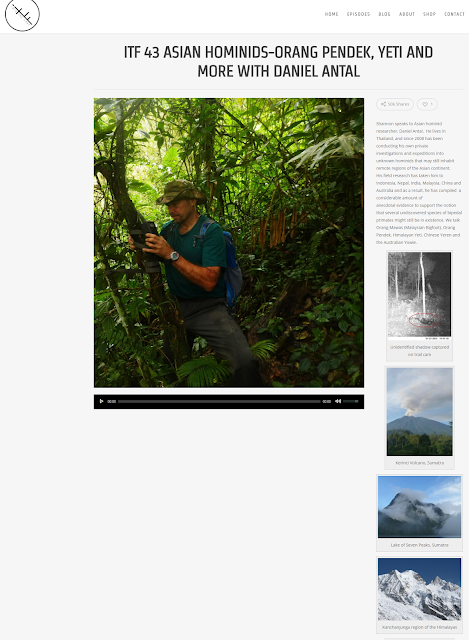One of my main objectives during this expedition was to look for tracks on snow-covered passes at moderate altitudes. My Nepalese guide and I were able to find just such a location high above the infamous Barun Valley, which has long been considered to be a prime Yeti habitat.
After setting up cameras by the Barun river, which took well over five hours, we decided to explore the high mountain pass just above our current location where we were based. After hiking approximately twenty minutes off the main trail we entered a large field that was covered in relatively hard-packed snow with several large rock formations strewn across it. Above us stood two unnamed peaks connected by a ridge and from our position we had fine views of both Mount Makalu to the west and the Kanchenjunga range to the east. As we slowly continued to make our way one of the boulders caught my eye as it seemed that there was a dark looking patch of snow just at its base. As we approached the spot it was apparent that something had jumped off the top the rock which I estimated was close to seven feet in height and then proceeded to stride off into the distance.The large track was very peculiar as it appeared to have been made by something that had large talons or claws. The subsequent tracks,which were almost in a straight line,were much smaller and appeared to be hoofed.
After a considerable amount of discussion, we agreed that they were probably made by an ungulate, most likely a blue sheep or a species of musk deer (such as the one below which was photographed the week before at a much lower altitude).
Several minutes later and slightly higher up we found another odd looking trackway which my guide adamantly declared was made by a Tehlma or Pigmy Yeti. The tracks were only about 3 inches across and appeared to have 4 or possibly 5 small toes on them. My immediate reaction was that they were most likely made by a snow leopard as they had no heel print. However, my guide quickly explained to me that these Tehlmas when traversing trough snowfields walk on the balls of their feet and therefore the heel is not visible. He then proceeded to draw an outline of what the full foot of the creature would actually look like. A very persuasive argument given the fact that the entire trackway was incredibly straight with a constant stride length which strongly suggested or at least superficially resembled one that an animal walking bipedally would make.
Subsequent trail cam set up in the same vicinity indicated that there was a considerable amount of Himalayan grey wolf activity in the area and therefore my final conclusion is that the tracks were made by wolf and not a pygmy hominid, but I might be wrong.
Throughout this region the local Sherpa name for the Yeti is "Cokpa" (pronounced shokpa or sometimes chokpa). These creatures are virtually never seen but their tracks are said to be enormous and their stride length even more impressive.
As we got closer to the mountain ridge we came upon another intriguing trackway but this time the tracks were considerably bigger than my size 10 boots. After closer inspection my guide surmised that they were made by a Yeti but of the larger, Cokpa variety. The distance between each individual track was very short, however further up there were large gaps indicating a stride length of well over four feet if indeed they were made by something walking upright. I can only speculate as to what made them; a Himalayan brown bear, a Sherpa porter attempting a treacherous short-cut or just a natural phenomenon such as a chunk of ice skipping down a slope.
This was my fourth expedition into the Himalayas and I still strongly feel that modern day Yeti sightings and tracks can be attributed to a known or unknown species of bear. However, further expeditions focused on lower altitudes in this region are needed in order to finally resolve the enigma of the Abominable Snowman.


























